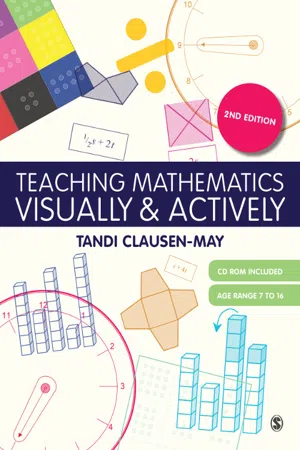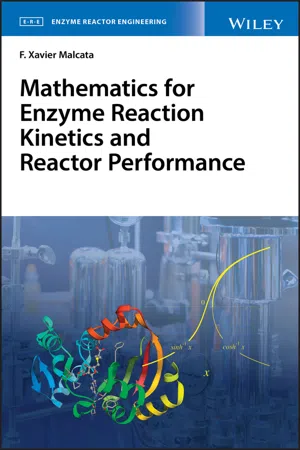Equations
Equations are mathematical statements that assert the equality of two expressions. They typically contain variables, constants, and mathematical operations. Solving an equation involves finding the values of the variables that make the equation true. Equations are fundamental in various mathematical fields, including algebra, calculus, and physics, and are used to model and solve real-world problems.
7 Key excerpts on "Equations"
- eBook - ePub
- John Bird(Author)
- 2019(Publication Date)
- Routledge(Publisher)
...Chapter 6 Solving simple Equations Why it is important to understand: Solving simple Equations In mathematics, engineering and science, formulae are used to relate physical quantities to each other. They provide rules so that if we know the values of certain quantities, we can calculate the values of others. Equations occur in all branches of engineering. Simple Equations always involve one unknown quantity which we try to find when we solve the equation. In reality, we all solve simple Equations in our heads all the time without even noticing it. If, for example, you have bought two CDs, each for the same price, and a DVD, and know that you spent £25 in total and that the DVD was £11, then you actually solve the linear equation 2 x + 11 = 25 to find out that the price of each CD was £7. It is probably true to say that there is no branch of engineering, physics, economics, chemistry and computer science which does not require the solution of simple Equations. The ability to solve simple Equations is another stepping stone on the way to having confidence to handle engineering mathematics and science. At the end of this chapter, you should be able to: distinguish between an algebraic expression and an algebraic equation maintain the equality of a given equation whilst applying arithmetic operations solve linear Equations in one unknown including those involving brackets and fractions form and solve linear Equations involved with practical situations evaluate formulae by substitution of data 6.1 Introduction 3 x – 4 is an example of an algebraic expression. 3 x – 4 = 2 is an example of an algebraic equation (i.e. it contains an ‘=’ sign). An equation is simply a statement that two expressions are equal. Hence, A = π r 2 (where A is the area of a circle of radius r) F = 9 5 C + 32 (which relates Fahrenheit and Celsius temperatures) and y = 3 x + 2 (which is the equation of a straight line graph) are all examples of Equations. Science and Mathematics for Engineering...
- eBook - ePub
- Tandi Clausen-May(Author)
- 2013(Publication Date)
- SAGE Publications Ltd(Publisher)
...So for early work in algebra the first thing we need is a symbol that indicates clearly, in itself, the range of meanings and values that x can have. Some textbooks use a box for the unknown when Equations are introduced, with 4 + = 10, for example, or – 7 = 2. This is helpful, as the boxes are closed so we do not know what is inside, but we may be able to open them to find out. The variable in a function, on the other hand, may be thought of as a box into which we can put a range of values – so in = + 3 we have a function relating the variable to the variable, where the number in is always three more than the number in. Then, with time, the more conventional letters can be introduced, with y = x + 3, for example. b) Solving Equations – the Balancing Model The equality sign has a very clear meaning. It means that the total value of everything on one side of the ‘=’ is equal to the total value of everything on the other side. That, at least, is the theory. But what many learners understand by the equality sign is the instruction: Work out the answer. They meet thousands of such orders over a period of years in exercises set out with an equality sign and an answer space: 3 + 6 = _____ ; 4 × 9 + 17 = _____ ; 16π - √(3.6) = _____ ; (x + 3)(x + 1) = _____ ; and so on. In each case, the equality sign actually carries the message Do the calculation on the left, and write the answer on the right. This can lead to such nonsensical working as: 4 × 9 + 17 = 4 × 9 = 36 + 17 = 53 The real meaning of the equality sign should be discussed early, before the introduction of formal algebra. The visual and kinaesthetic ‘picture in the mind’ that we need here is a well-established one, and it is very effective. It shows a set of balancing scales, which must be kept balanced by ensuring that the total value of everything in each of the two pans is equal. This image is very powerful...
- eBook - ePub
- Mike Aitken, Bill Broadhurst, Stephen Hladky(Authors)
- 2009(Publication Date)
- Garland Science(Publisher)
...CHAPTER 2 Numbers and Equations In Chapter 1 we saw how we can give values for physical quantities in terms of numbers and units and then use algebra to state relations between these quantities. In this chapter we develop the use of algebra further while reviewing some aspects of arithmetic: fractions; powers and roots; order of calculations; and ratios and percentages. We shall see how the summation sign can be used to denote the addition of many values. Scientific notation for numbers is introduced to let us write very small and very large numbers and even ordinary-sized numbers when we know them to only a certain accuracy. Algebra is the natural language to use to describe the basic operations we can do with numbers. Such operations include the simple things like adding, subtracting, multiplying, and dividing, and more advanced operations like raising to a power and extracting a root. Algebra is also a useful tool when we consider how numbers can be combined to make fractions, ratios, and percentages. Finally, we return to algebra itself to consider what it means to solve Equations. A very important example of solving Equations is provided by the prediction of the amount of a small molecule, which could be a drug or hormone, that will be bound to its receptor if we know the amount of the receptors, the concentration of the small molecule, and the affinity constant for the binding. This chapter has three main objectives. The first is to help you understand what you are doing when you perform calculations, regardless of whether you use pencil and paper, a calculator, or a computer. The second is to show that algebra greatly aids us in describing the relations between numbers and, by extension, physical quantities. The third is to show you how to tackle algebraic problems. 2.1 Arithmetic with fractions Any number we can write down, punch into a calculator, or type into a spreadsheet on a computer is a rational number; that is, it can be written as a fraction...
- eBook - ePub
Math Lesson Starters for the Common Core, Grades 6-8
Activities Aligned to the Standards and Assessments
- Paige Graiser(Author)
- 2014(Publication Date)
- Routledge(Publisher)
...Unit 3 CCSS-M Domain EE Expressions & Equations The human mind has never invented a labor-saving machine equal to algebra. Author Unknown Expressions & Equations During the middle grades, students will develop an understanding of the use of variables in mathematical expressions and Equations. The introduction of variables into mathematics tends to be a sticking point for many students (and their parents), but this will not be a new concept since all elementary students are asked to solve problems such as 2 + □ = 7 or 8 − ? = 5 (with □ and ? acting as variables in these examples). Student work in this standard will include writing expressions that correspond to given situations, the evaluation of expressions, and the use of formulas to solve real-world problems. Students will learn that the solutions of an equation are the number values of the variables that make the equation true. Students will also use the notion of maintaining the balance of both sides of an equation to solve Equations. Students in grade 6 will begin solving one-step Equations but will progress to multistep Equations by grade 7. Sixth Grade In grade 6, students will begin to understand the use of variables in mathematical expressions. They will write simple expressions and Equations that correspond to real-world situations, evaluate expressions, and use expressions and simple formulas to solve real-world problems. Students will learn that the solutions of an equation are the values that can be assigned to the variables that make an equation true. To round out their study of expressions and Equations, sixth-grade students will construct and analyze tables and will use Equations (such as 6 x = y) to describe the relationships between quantities. Seventh Grade Students in grade 7 will progress to solving multistep real-life problems that involve both positive and negative rational numbers. These problems will contain whole numbers, fractions, and decimals...
- eBook - ePub
- Daniel Greenberg(Author)
- 2014(Publication Date)
- Research & Education Association(Publisher)
...Chapter 5 Algebra Topics 5.1 VARIABLES AND EXPRESSIONS An expression is a mathematical phrase that contains numbers, variables, and symbols such as +, −, ×, and ÷. An expression can contain parentheses or other symbols as well. Numbers and variables that are separated by + or − signs are called terms ; those that are part of multiplication are called factors. An example of a simple algebraic expression is just the variable x. An expression may contain two terms, such as 2 a + 3 b, or it can be quite complicated, involving many letters, numbers, and symbols. A variable is a term that stands for a number or quantity, but its value can change (in contrast to a letter such as e, the elementary electron charge, which is a constant). Usual letters used for variables in algebra are x, y, z, a, b, c, but they can be anything. Multiplication can be indicated by x, •, or *, or by parentheses, as in (2)(3 x), which equals 6 x, or even by nothing, as in xy, which means multiply x by y. A. Simplifying Expressions Simplifying an expression is presenting it in a simpler form, perhaps by removing parentheses or combining some terms. 5.1 Problem 1: Which expression is greater: 5 − (8) or −(28)? A) 5 − (8) is greater. B) 5(−8) is greater. C) The expressions are equal in value. D) Both expressions equal −3. STRATEGY Remove parentheses; then simplify. THINK • Write the expression. Insert signs to give every term a sign. • Resolve signs using simple rules. • Remove parentheses and simplify. −3 is greater than −40, so 5 − (8) is greater. The correct answer choice is (A). B. Properties The basic properties of expressions are called the associative, commutative, and distributive properties. These properties allow us to simplify expressions. • Commutative : This is the most commonly used property. It says that you can “commute” terms or factors and not change the value. For example, 2 + 3 is the same as 3 + 2, and 2 × 4 is the same as 4 × 2...
- F. Xavier Malcata(Author)
- 2020(Publication Date)
- Wiley(Publisher)
...7 Solution of Algebraic Equations Since Equations reflect the major physicochemical principles that govern equipment operation, their solution conveys specific values for parameters that were not arbitrated (or somehow fixed in advance). A major distinction is, however, be put forward between exact analytical solutions – either of closed or open forms; the former encompasses linear Equations and the quadratic equation, whereas the latter encompasses Lambert’s equation, among others. Both give rise to analytical formulae containing the coefficients of the original equation and are universally applicable; however, closed‐form solutions are expressible as a finite number of algebraic operations, whereas open‐form solutions require infinite series. Many Equations do not hold an exact solution – either due to their intrinsic form, or because it was not yet found; in such cases, numerical methods are in order – which call for an initial search interval, or at least a single initial estimate. Only univariate problems will be discussed below in terms of numerical analysis; for more than one independent variable, such methods may be directly extended per se, and independently (although simultaneously) applied to each variable when searching for the overall root – whereas the partial derivative of the function under scrutiny, with regard to each such variable, is to be taken in the case of derivative‐dependent methods. 7.1 Linear Systems of Equations Consider a system of linear Equations of the form (7.1) where x i 's (i = 1, 2, …, n) denote unknown variables, a i,j ’s (i = 1, 2, …, m ; j = 1, 2, …, n) denote (real) coefficients of said unknowns, and b i ’s (i = 1, 2, …, m) denote independent terms; and further assume there is no constraint imposed upon the relative magnitude of (integer) m and n. Since the information to calculate the solution(s) is scattered through (and requires simultaneous consideration of) the whole set of Equations as per Eq...
- Sandra Rush(Author)
- 2013(Publication Date)
- Research & Education Association(Publisher)
...Chapter 5 Algebra— Not a 4-Letter Word The very mention of the word algebra strikes fear in the hearts of many students. Students have said, “Who cares what x is?” and “What does this have to do with the real world?” Well, algebra is something you use every day—you just don’t recognize that you are doing algebra. If I asked you, “How much change would you get from a $10 bill for a purchase of $7.20?” you would probably be able to come up with the answer ($2.80) pretty quickly. But if I asked you to solve the equation x + 7.20 = 10 for x, maybe the answer wouldn’t come as fast. It’s the same thing. In fact, a number of the problems you already have done in this book have been algebra problems, but they were asked as “what is?” type questions, so you probably didn’t notice that they were the same as “x =” type Equations. By learning a few basics, as well as how to interpret some key words, algebra should become less daunting. More than half of the GED ® math test involves algebra, so it’s pretty important to be able to understand the problems. Once you understand what is being asked, the arithmetic to get the correct answer is fairly easy. This chapter introduces basic concepts and vocabulary and then presents lots of examples to help you feel more confident in solving algebraic problems. Setting up Equations Algebra involves Equations. The word Equations has the same root as equal, and that is what Equations are all about. Whatever is on one side of the equals sign must equal what is on the other side. So if you add something to one side, you must also add it to the other side. The same is true for subtracting, multiplying, dividing, taking roots, or raising to powers. Without using x ’s, we can see this is true by considering the equation 8 + 2 = 6 + 4. If we decide to add 3 to the left side, we must add 3 to the right side of this equation or it won’t be true: 8 + 2 + 3 = 6 + 4 + 3. It’s that simple...






